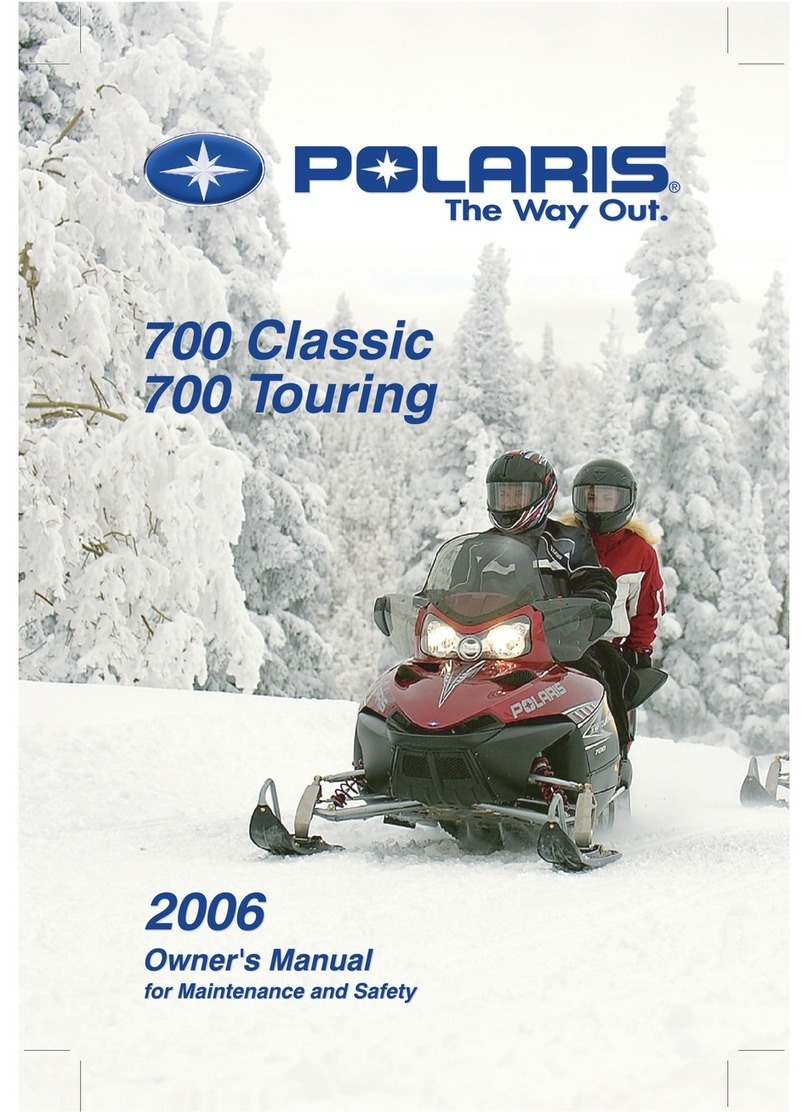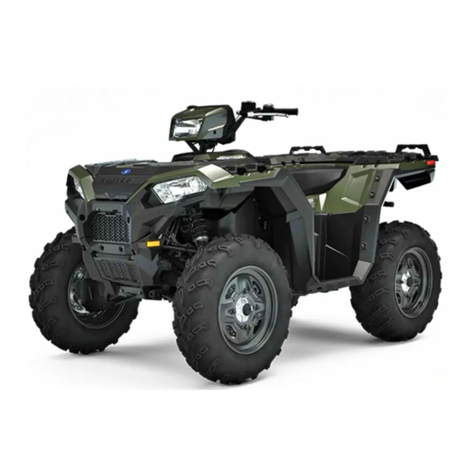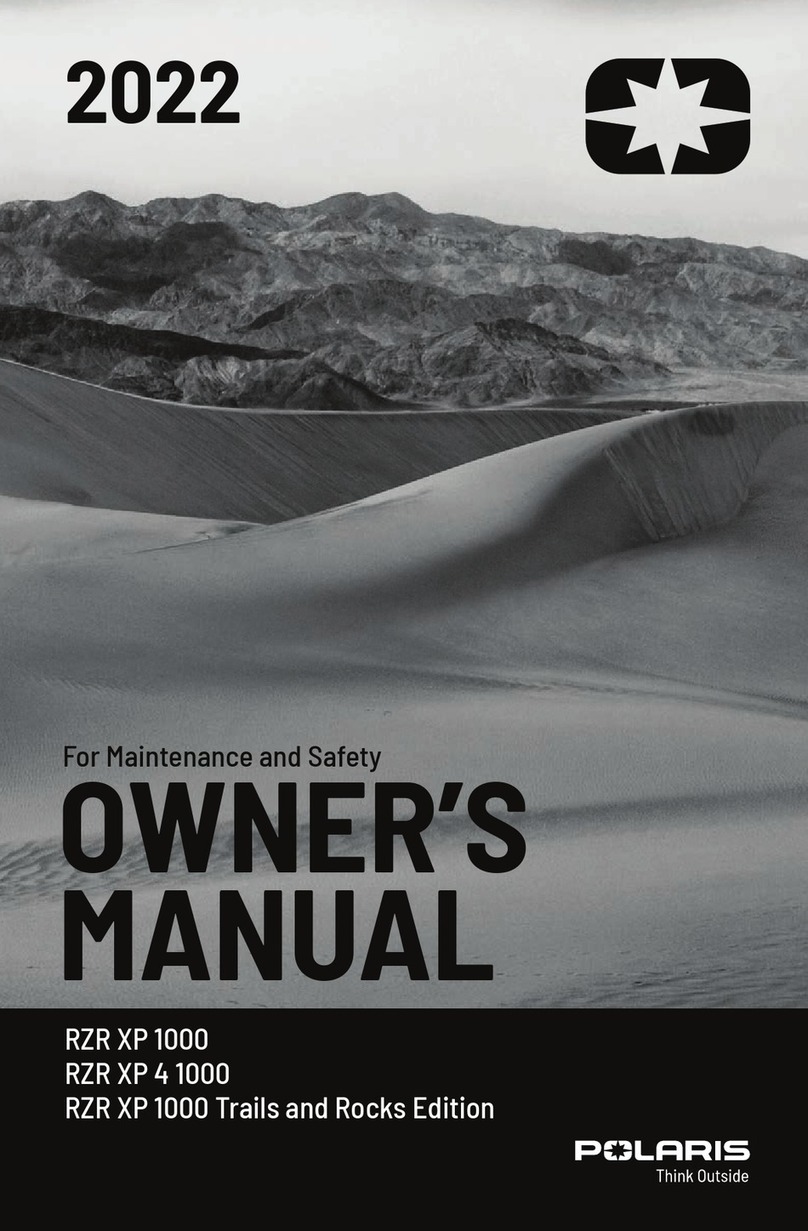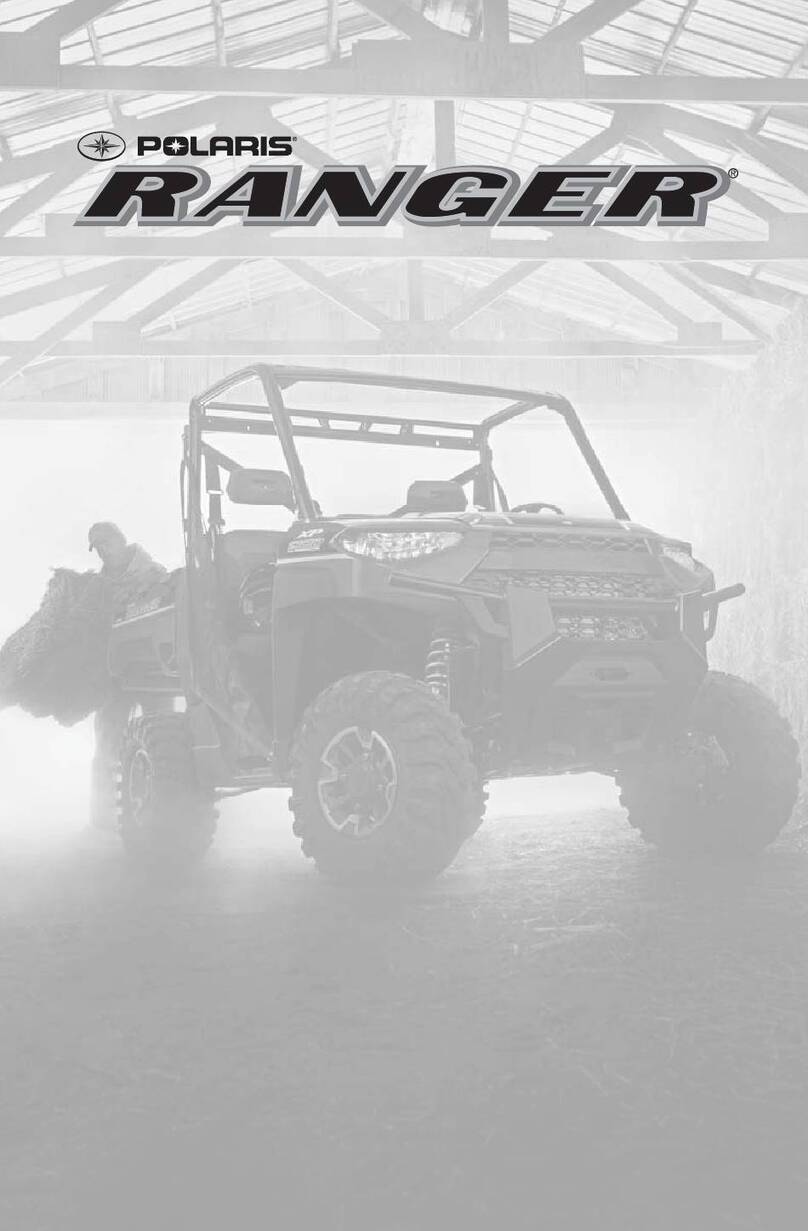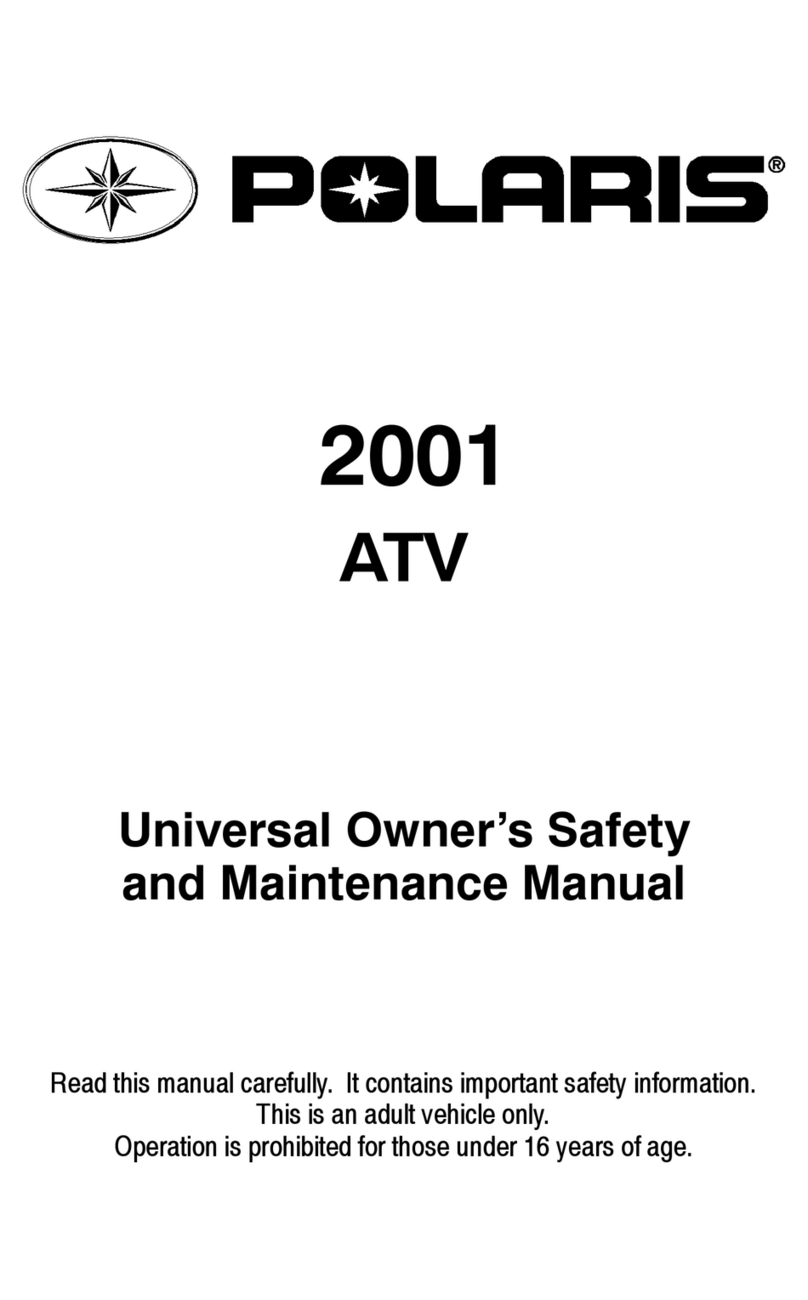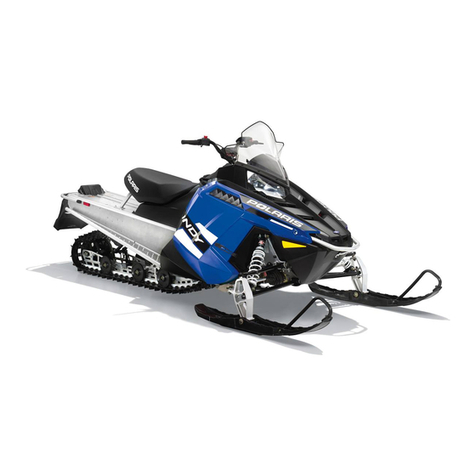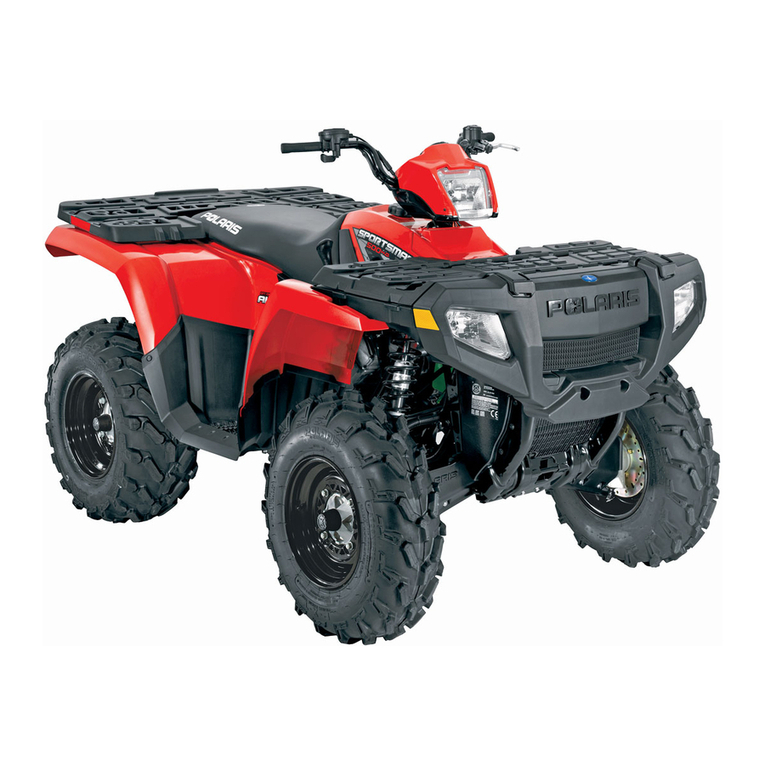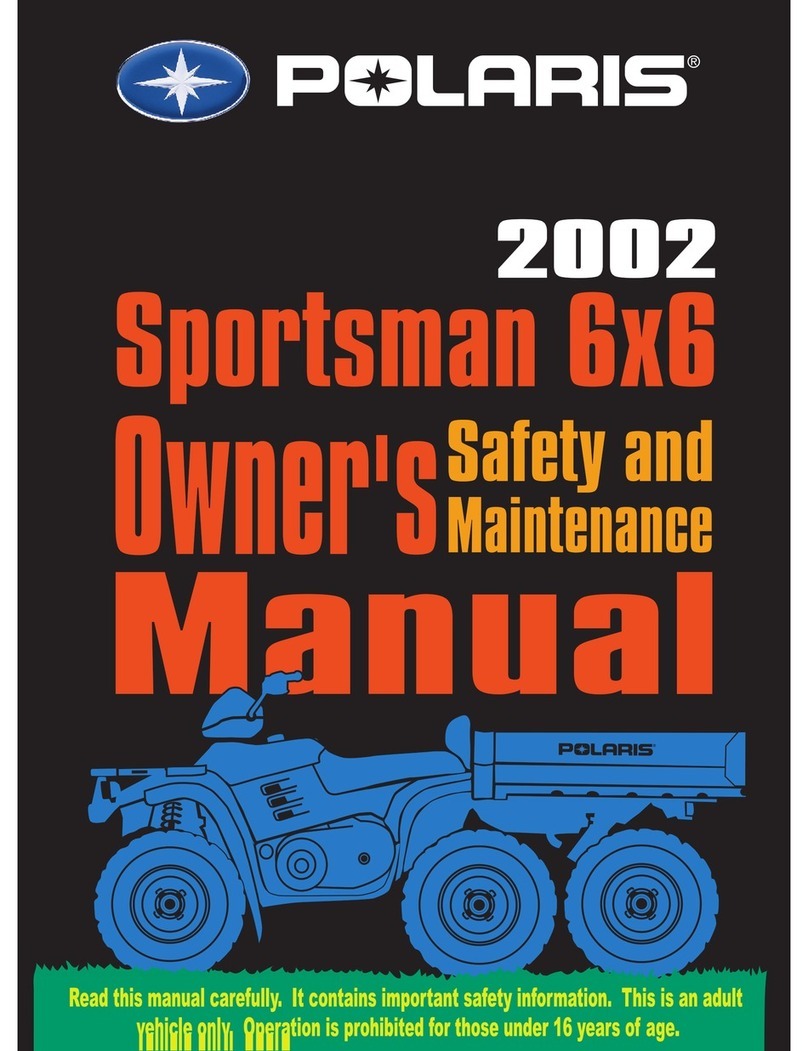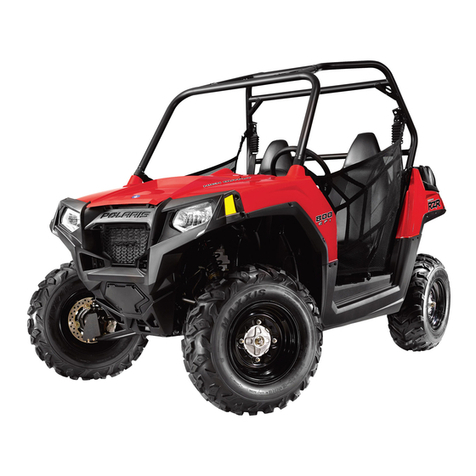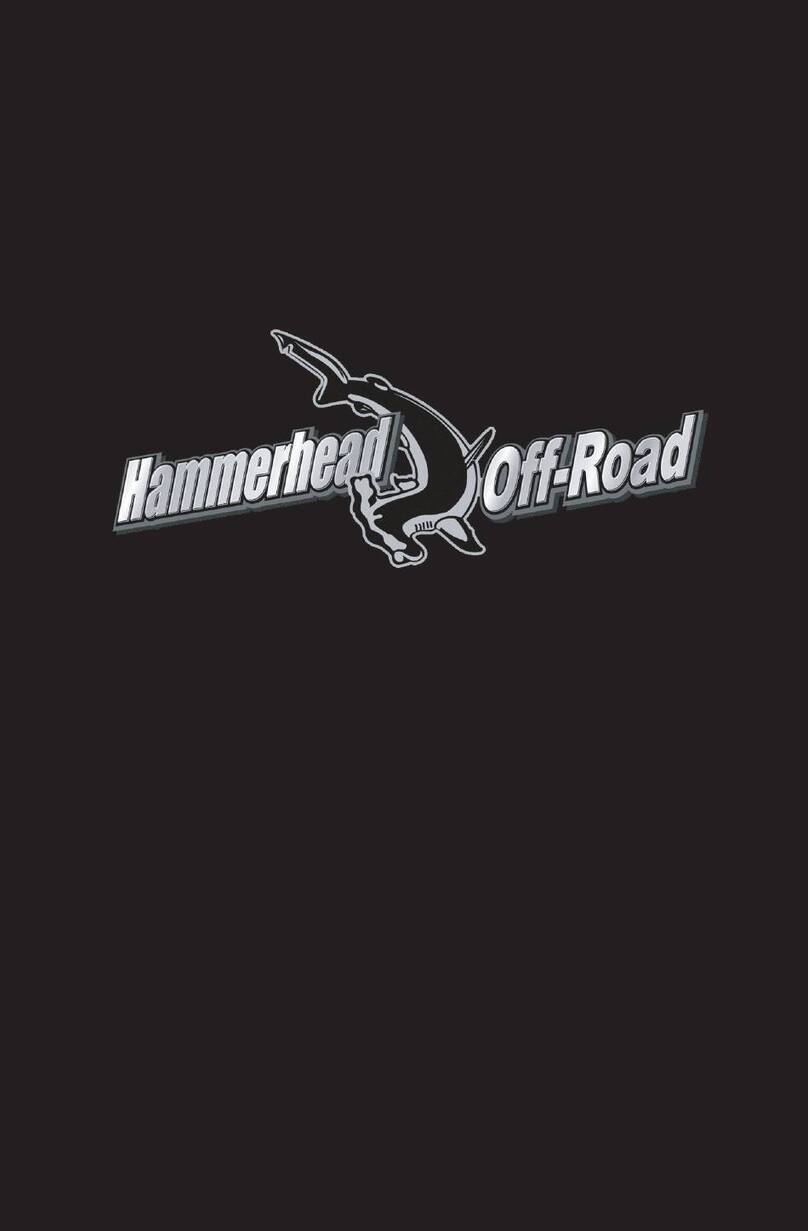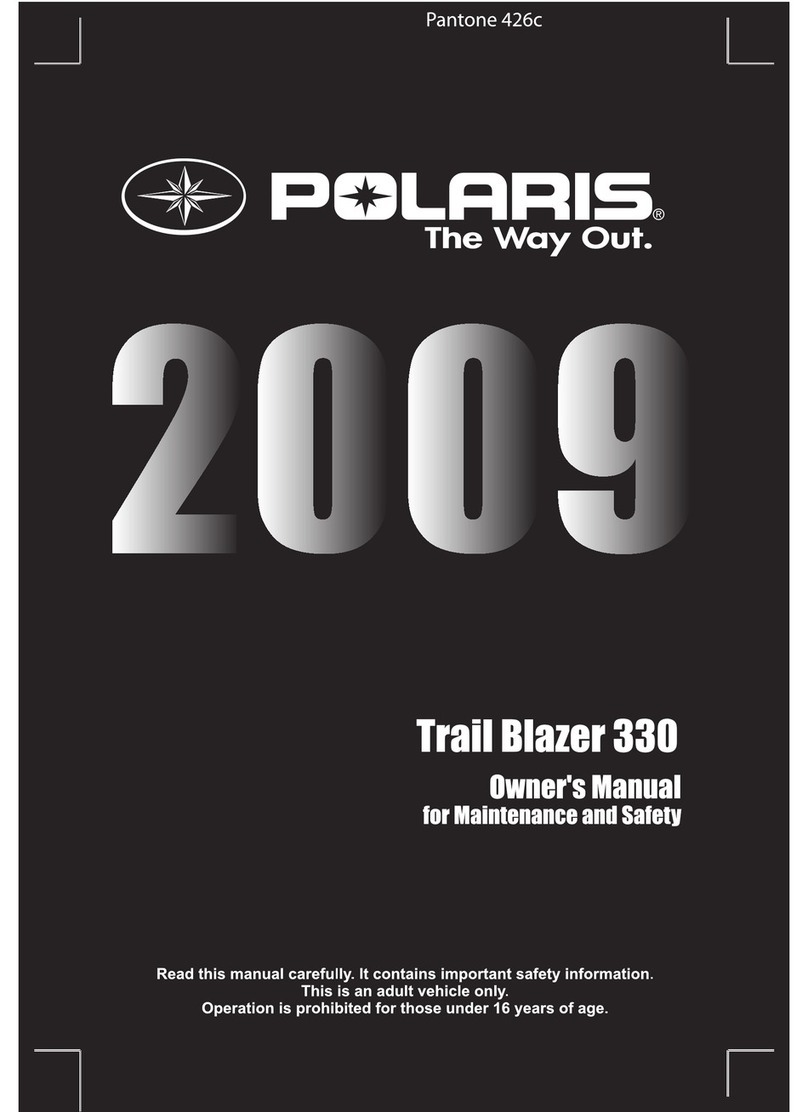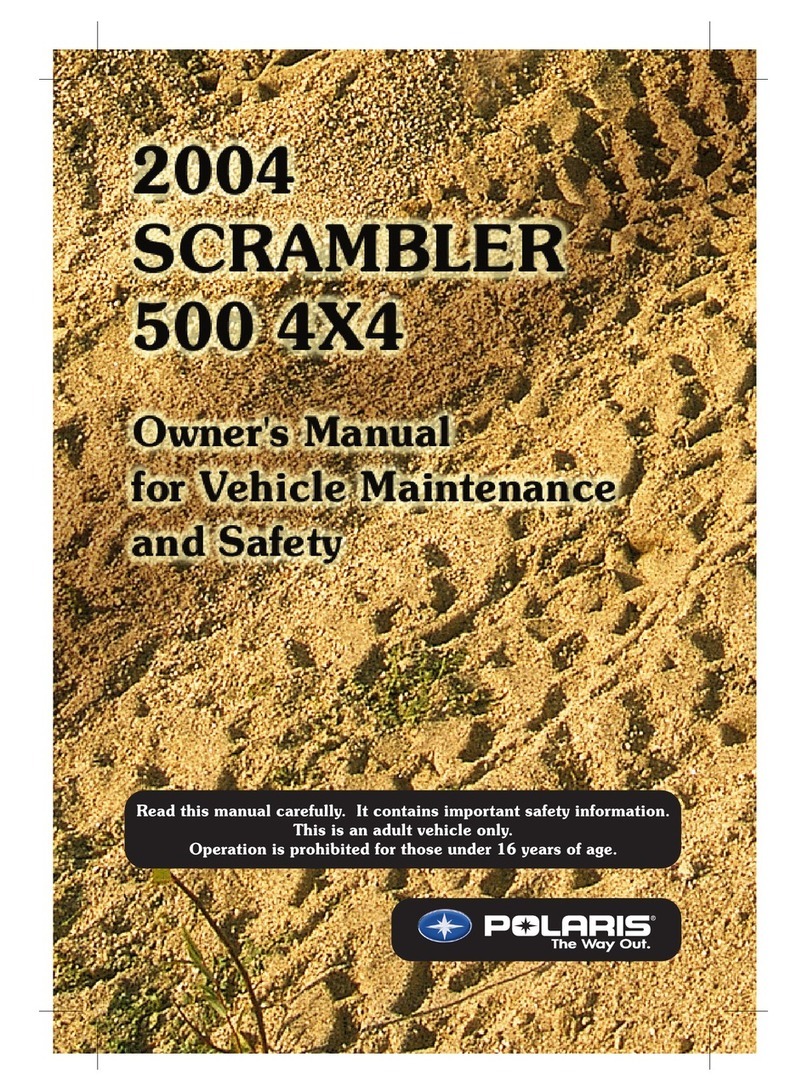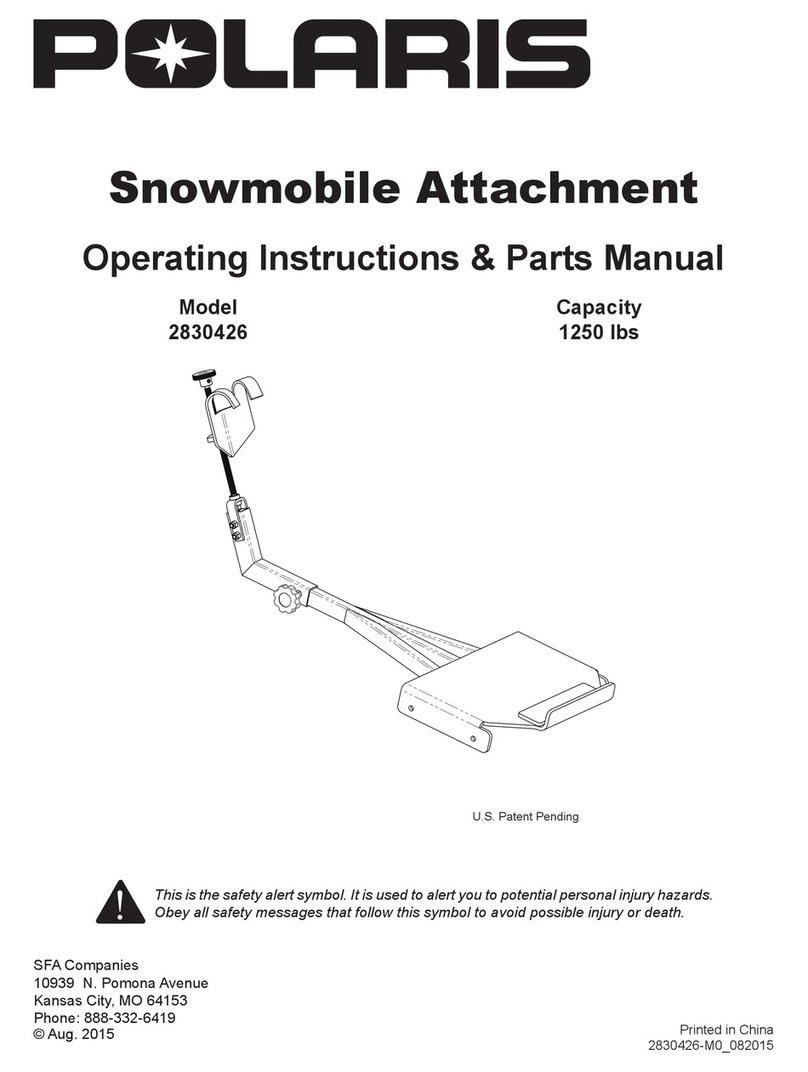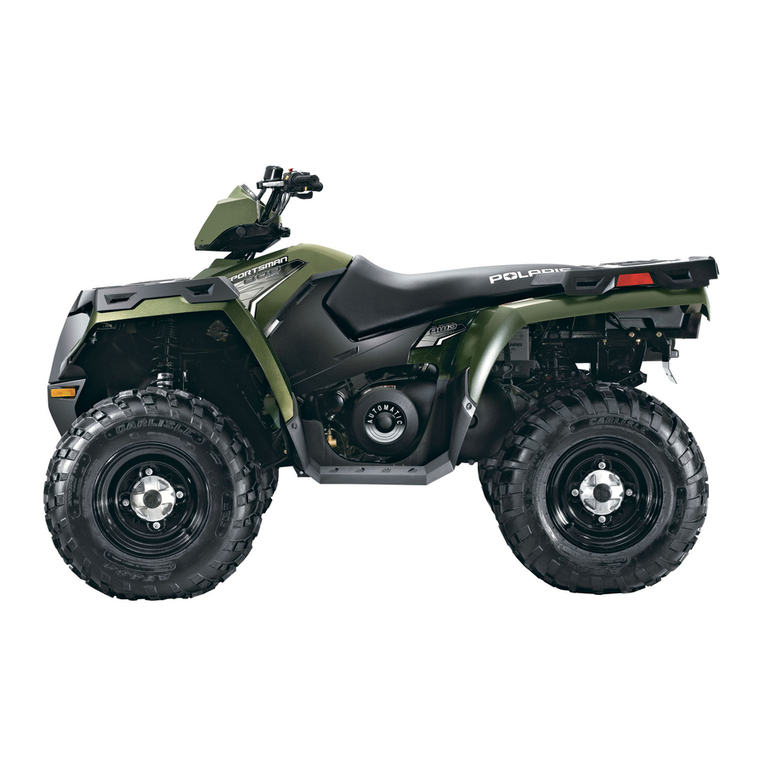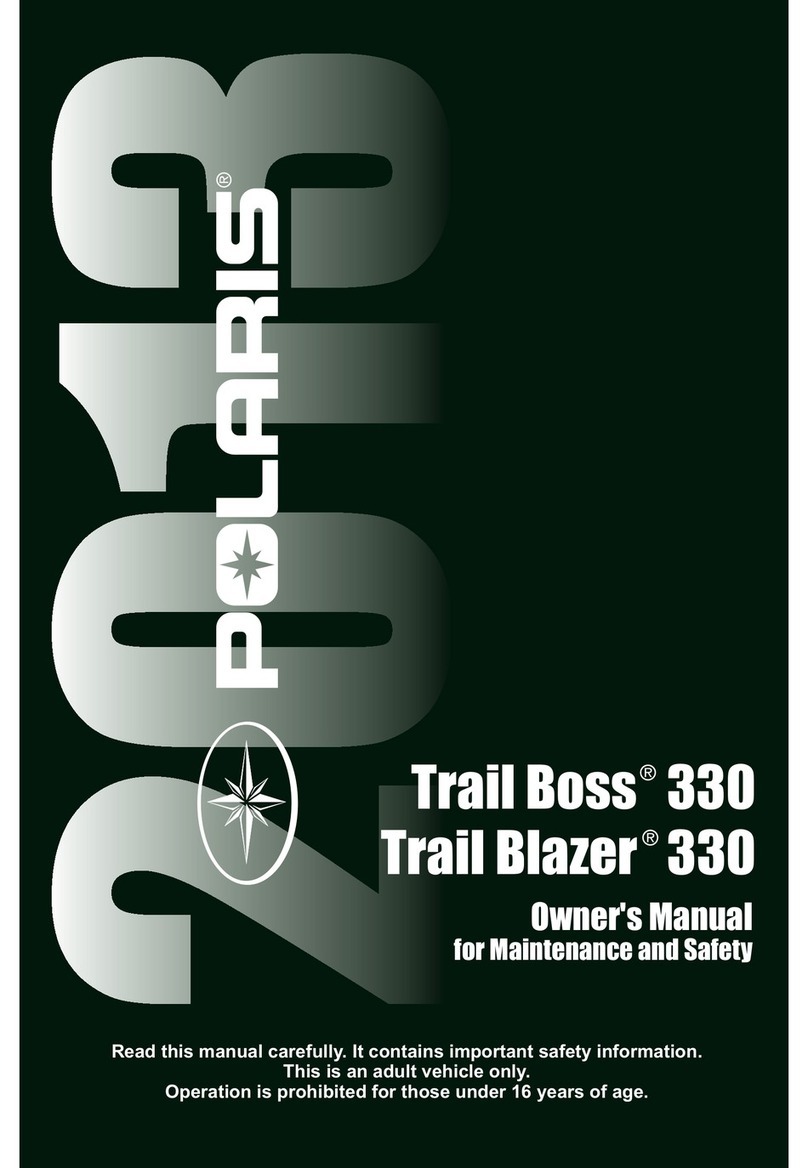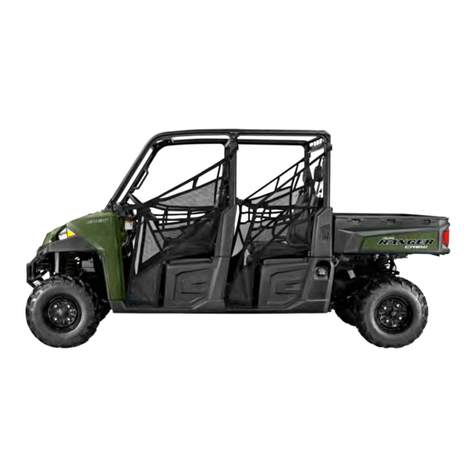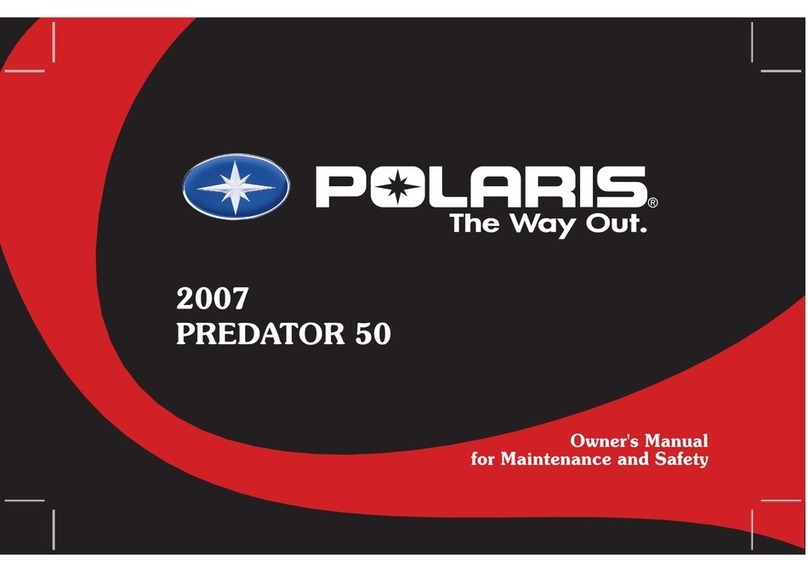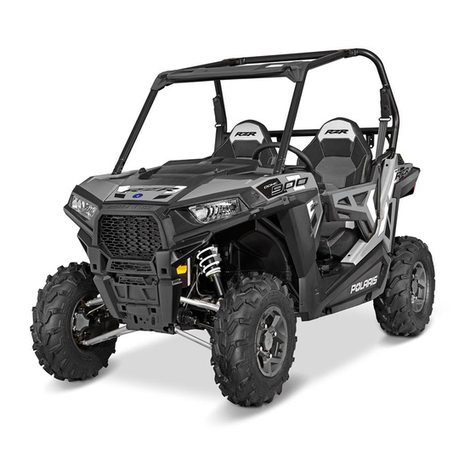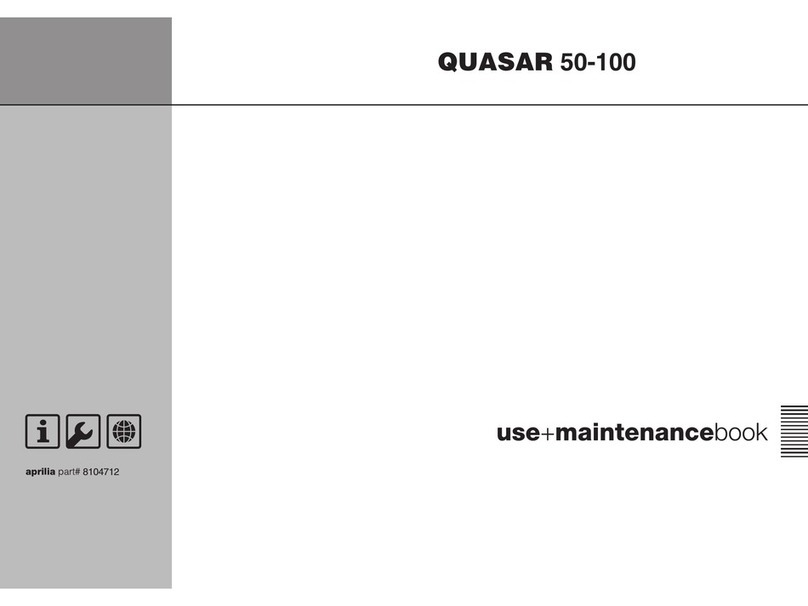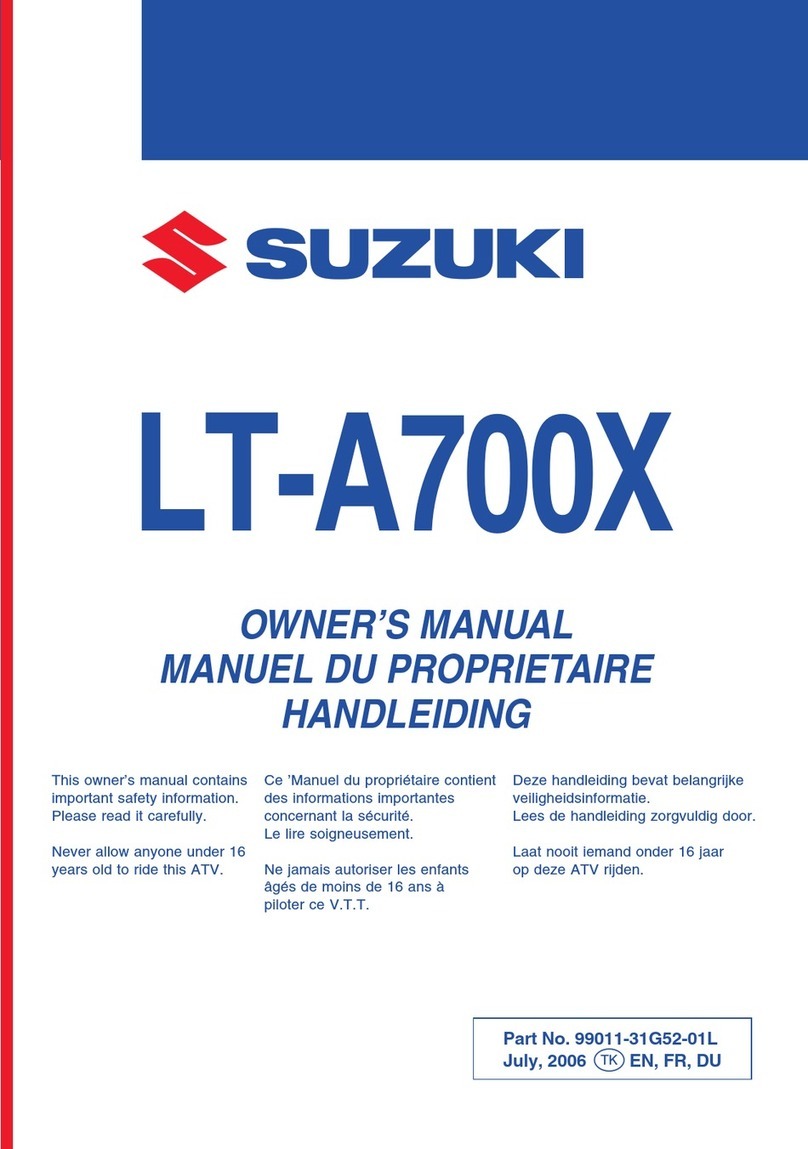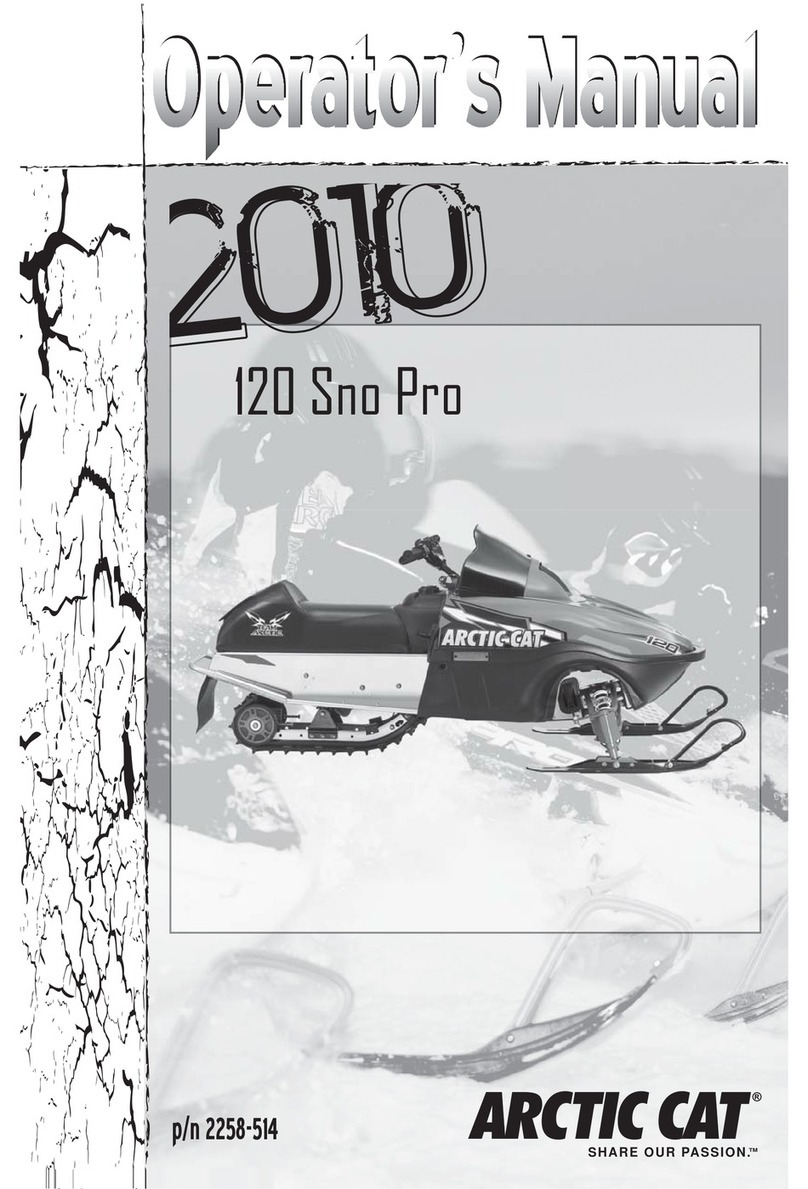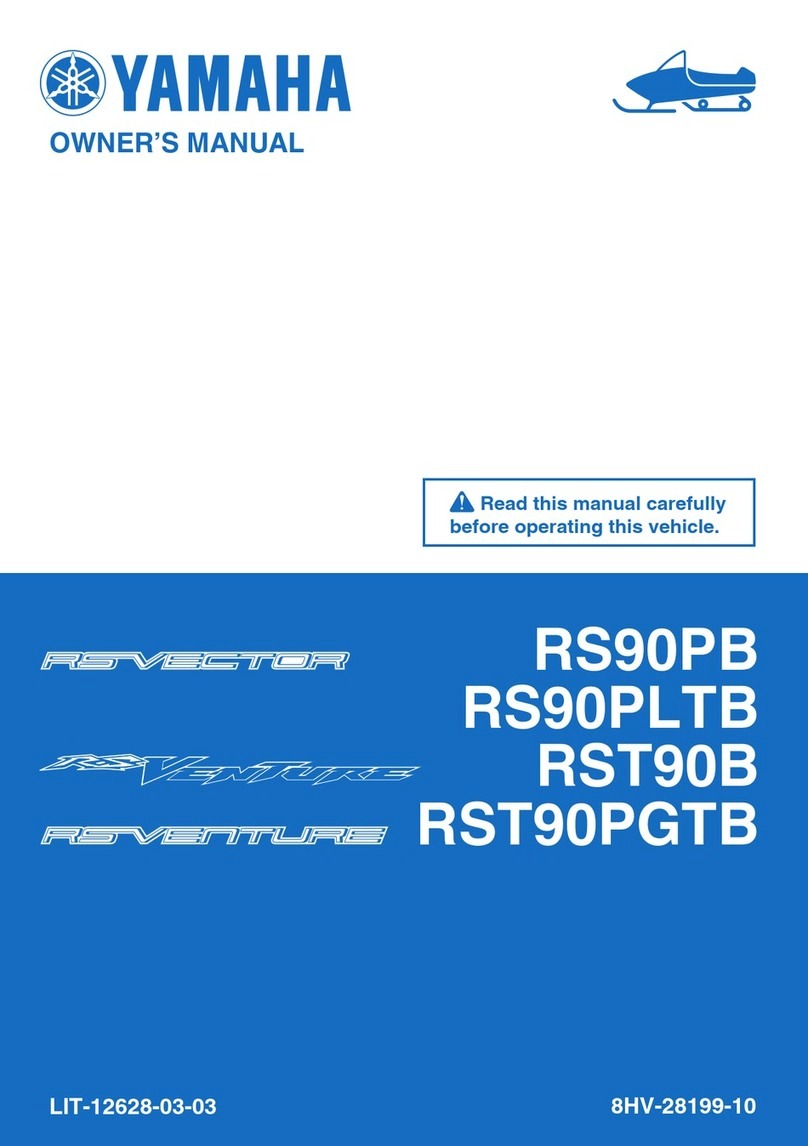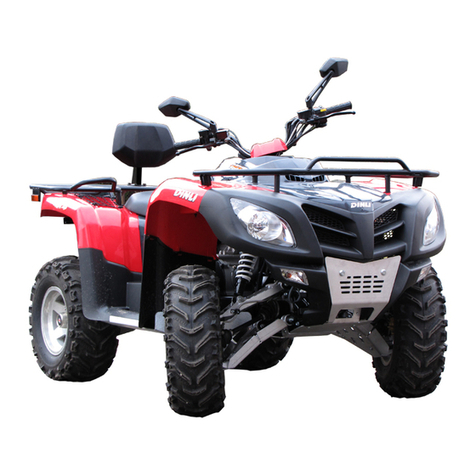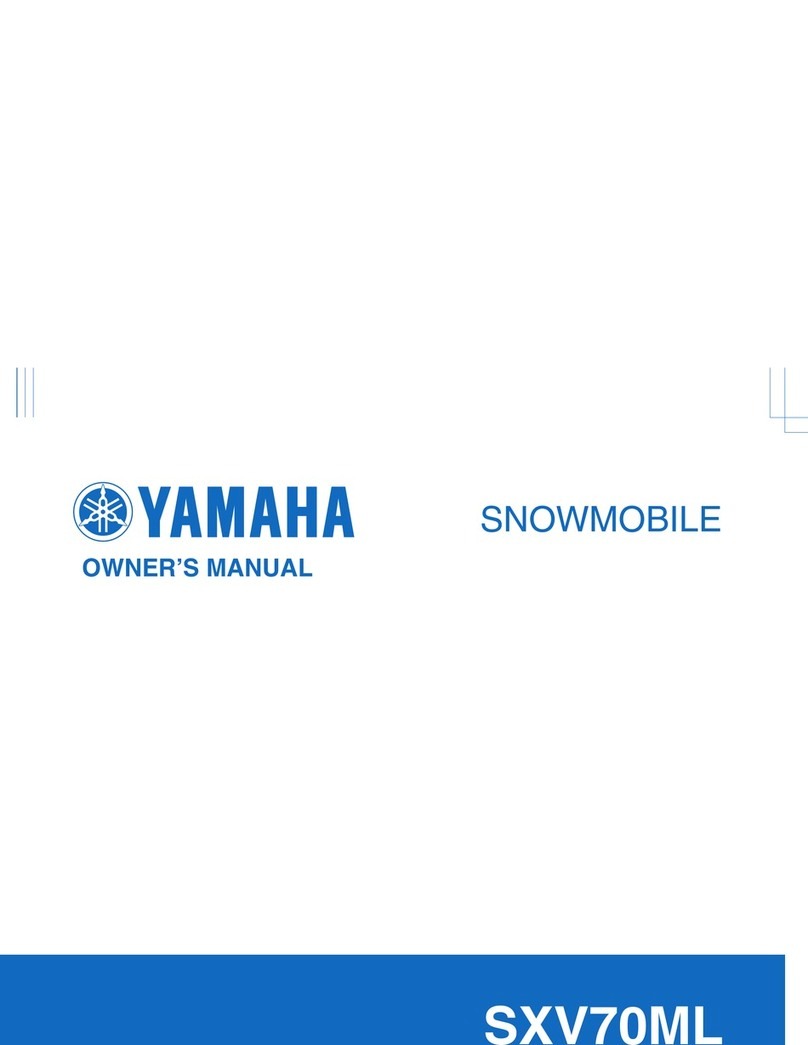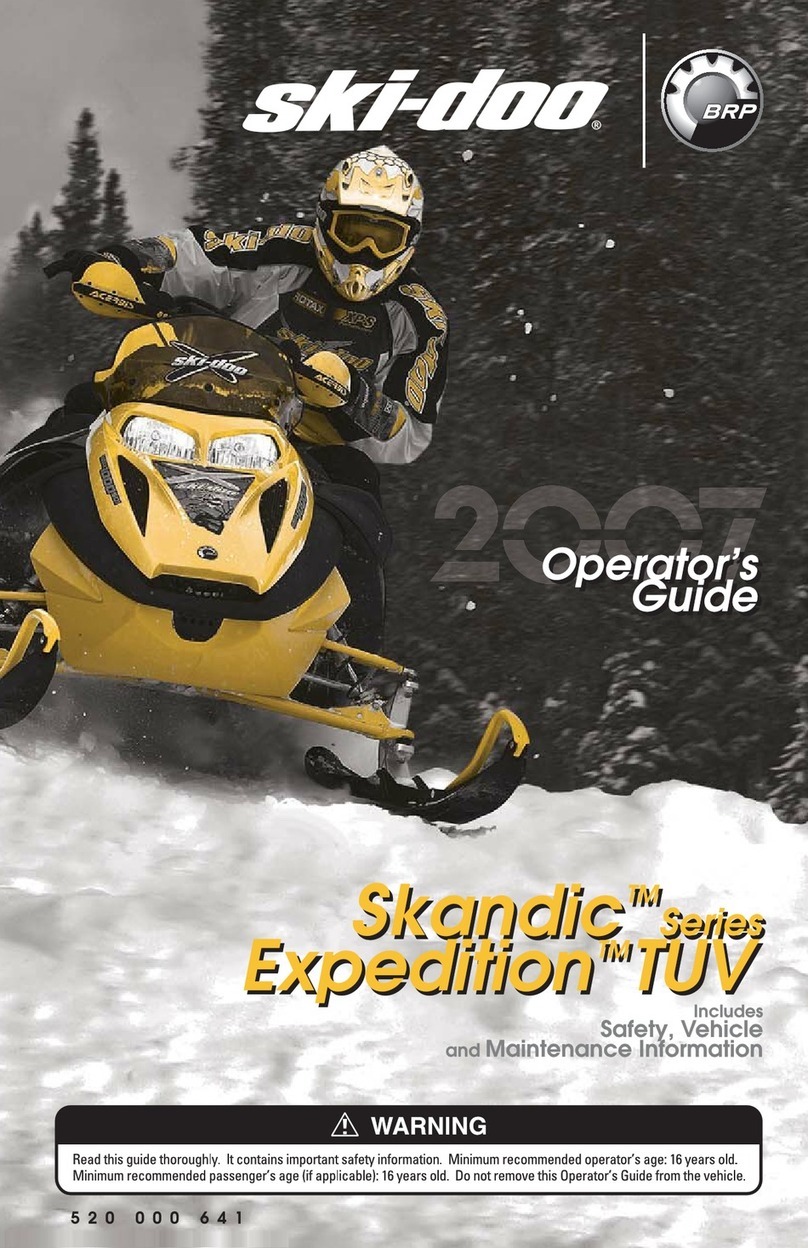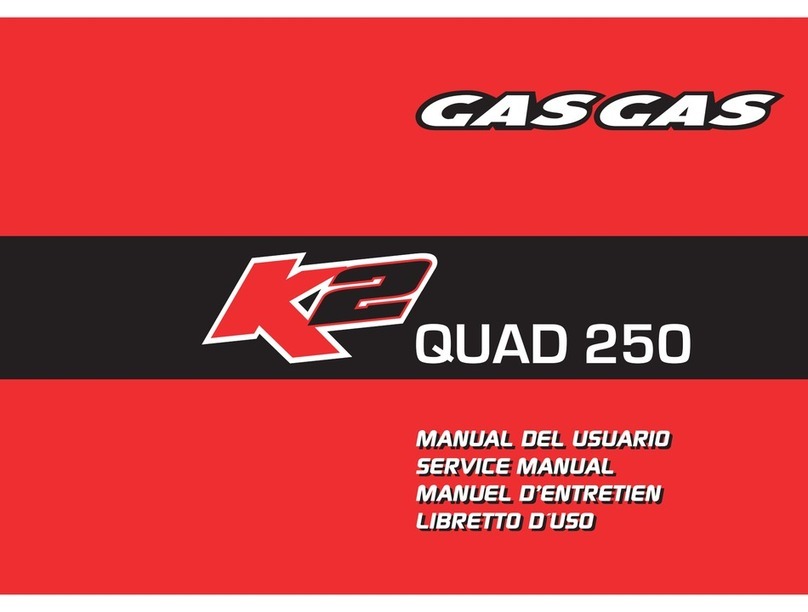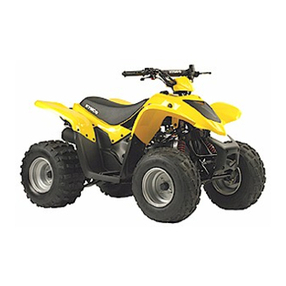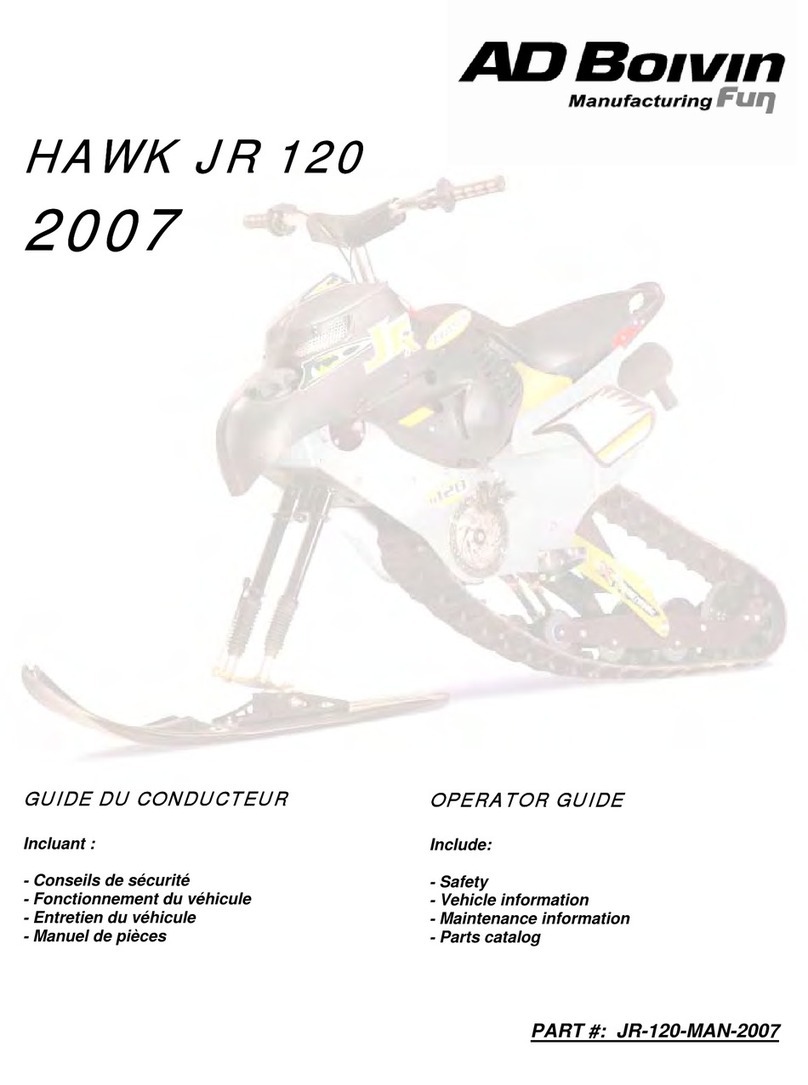
G
ENE
RAL
INFO
RMATION
11. Keep an approved fire extinguisher nearby. Be
sure it is rated fur gasoline (Class B) and electrical
(Class C) fires.
12. When drying bearings or other rotating paris
with compressed air, never allow the airjet to rotate
the bearing or pari. The air
je
t is capable
of
rotating
them at speeds tar in excess of those for which they
were designed . The bearing or rotating part is very
likely to disintegrate and cause serious injury and
damage. To prevent bearing damage when using
com pressed air, hold the inner bearing race by hand.
WARNING
The improper use
of
compressed air is
velJ' dangerous. Using compressed
air to tlUSI
off
clothes, the ATV or
workbench can cause
jl
ying particles
to be blown into eyes or skill. Never
direct or blow compress
ed
air in/a
skin or through any
bod
y opening (in-
cluding cuts) as this can cause severe
injury or death. Compressed air must
be used care
/id
ly; never allow chil-
dren to lise or play with a
ll)'
com-
pressedair equipment or hoses.
13. Never work on the upper part
of
the vehicle
while someone is worki ng underneath it.
14. When putting the vehicle on a stand, make sure
the vehicle is secure before walking away from it.
15. Never carry sharp tools in clothing pockets.
16. There is always a right and wrong way to use
tools. Learn to use them the right way.
17. Do not start and run the ATV in an enclosed
area, The exhaust gases contain carbon monoxide, a
colorless, odorless, poisonous gas. Carbon monox-
ide levels build quickly in a small closed area and
can cause unconsciousness and death in a short
time. When it is necessary to start and run the vehi-
cle during a service procedure, alwaysdo so out-
side, or in aservice area equipped with aventilating
system.
CLEANING
PARTS
Cleaning parts is one
of
the more tedious and dif-
ficu lt service jobs
per
formed in the home garage.
While there are a nnmber
of
chemical cleaners and
solvents available for home and shop lise, most arc
poisonous and extremely flammable. To prevent
chemical overexposure, vapor buildup, tire and sc-
3
rious injury. observe all manufacturer
's
directions
and warn ings while noting the following,
I. Read the entire product label before using the
chem ical. Observe the precautions and warnings on
the label. Always know what type
of
chemical is be-
ing used.
2. If the chemical product must be mixed, measure
the proper amount according to the direction s.
3. Always provide sufficient ventilation when
working with solvents or other chemicals. If a
chemical can be smelled, there is some vapor in the
air. The stronger the smell, the stronger the vapor
concentration.
4. If a product is listed as combustible, flammable
or an extremely flammable Iiquid, the danger
offi
re
increases as the vapor collects and builds up in the
shop.
5. lf a product is listed as a poison, the vapor is poi-
sonous as well as the liquid.
o. To prevent skin exposure, wear protective
gloves when cleaning parts. Select a pair of chemi-
cal-resistant gloves suitable for the type of cherni-
cals that will be used. Replace the gloves whcn they
become thin, damaged, change COIOf, or swell.
7. Wear safety goggles when using chemicals and
cleaning parts.
8. Do not lise more than one type of cleaning sol-
vent at alime.
9. If a pan must be heated to remove abearing,
clean it thoroughly to remove all oil, grease and
cleaner residue. Then wash with soapy water and
rinse with clear water,
10. Wear a respirator if the instruction label says to
do so.
II . Keep chemical products out
of
reach of chil-
dren and pets.
12. To prevent sparks, usc a nylon bristle brush
when cleaning paris.
13. When using a commerc ial paris washer, read
and follow the manufacturer's instructions lor se-
lecting the type of solvent to usc. Parts washers
must be equ ipped with a fusible link designed to
melt and drop the cover in the event
of
fire.
14. Wash both hands and arms thoroughly after
cleaning parts,
HANDLING
GASOLINE
SAFE
LY
Gasoline, a volatile flammable liquid, is one
of
the most dangerous items in the shop, However, be-
a
